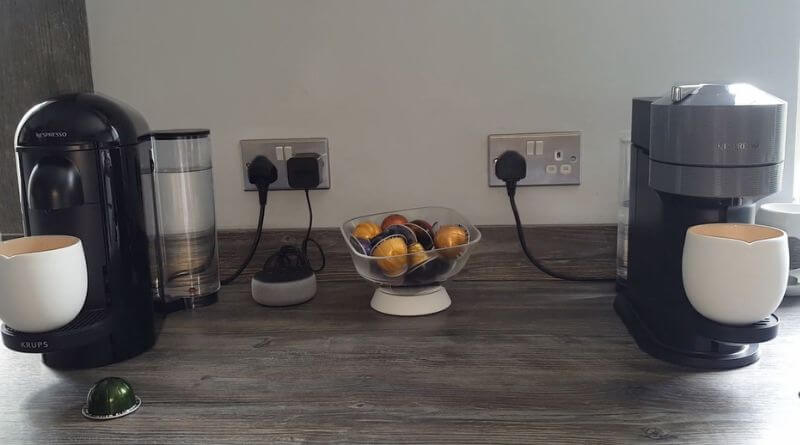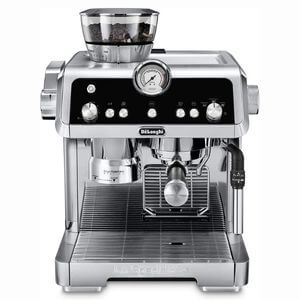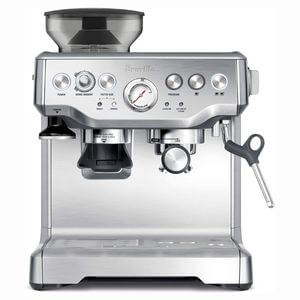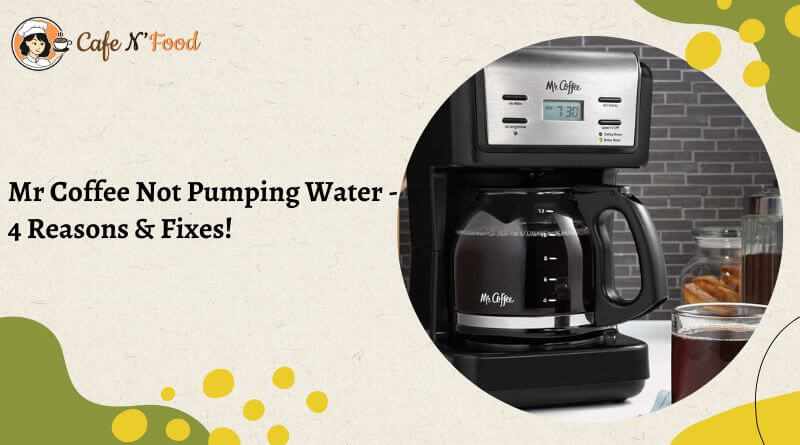Hey there! This post contains affiliate links to products. We may receive a commission for purchases made through these links. But it never influences our product selection process.
Did you just take the first sip to enrich your soul with the freshness of espresso, and wait, what? Why does my espresso taste burnt?
Nothing is more tranquil and soothing than starting our day with the scent of flowers and a refreshing cup of espresso. What a combo! But sometimes, we go for the same steps, and the espresso tastes burnt out of nowhere.
There can be many factors playing the role of evildoer in making your espresso taste burnt. The most possible reasons are as follows:
- Over-roasted beans
- Brewing at high temperature
- Reheating the Coffee frequently
- Unclean grinder
- Over-extraction, etc.
Do you want to pinpoint the culprit and throw it out on the ear? Then brace up as this article covers every nook and cranny of burnt espresso. Now, without waiting any further, let’s get to the point!
You may also like: How to fold square chemex filter paper
Why Do My Espresso Taste Burnt? 8 Possible Causes

Do you want to know what is constantly butting between you and your flavorsome espresso?
Multiple reasons, like over-extraction, wrong temperature, high brewing, uneven tamping, etc., could lead to a burnt rubber-like coffee.
So, let’s unfold our coffee culprits one by one.
01. Over-Roasted Beans:
If your espresso tastes like a burnt one, it’s not always your fault, buddy. There are chances that the beans have been brewed incorrectly, resulting in low-quality production.
These low-quality coffee beans on roasting give an overwhelming and unbearable taste to the espresso, making it completely unpalatable.
The tannic acid in the beans makes the taste different. Where roasting high-quality beans adds multiple flavors like chocolate, smoky, etc., low-quality bean roasting results in a disaster.
02. Brewing at High Temperature:
In most cases, the factor that causes burnt-tasting espresso is the wrong brewing temperature. Exposing the beans to high or low temperatures destroys the flavor completely.
An optimal temperature range is required to bring out all the soothing flavors from the roasted coffee beans without losing the delicate balance of perfection.
However, if you don’t provide the right temperature, either over-extraction or less extraction occurs, leading to a tasteless coffee.
Low temperature leads to less than required extraction. As a result, all the oils and aroma are not pulled from the beans, providing you with a low-intensity coffee cup.
Similarly, if you brew with boiling or very hot water, it will char them, and thus none of the desired flavors will be extracted from the beans.
The espresso gets a sour, burnt taste in both cases, making it importable.
03. Reheating the Expresso:
How about heating the cheeseburger again and again or baking the filled cooked cake again? Will they taste the same? NO! They simply lose their freshness and flavors.
So, how can you expect your delicate espresso to bear the intense heat again on reheating and taste the same?
By reheating a fully brewed espresso or any coffee, it continues to be brewed for a longer time, thus adding a burnt rubber-like taste to the smoothie.
So, it’s better to gulp in the Coffee soon after you make it. Else get ready to bear the rubbery, burnt taste.
04. Coffee Grinder’s Own Heat:
Another factor that can keep you from enjoying a fresh cup of espresso is the coffee grinder’s heat. And this is where the sweet laws of science and physics come into action.
The coffee beans and the burrs and blades of the grinder undergo friction due to excessive collision and rubbing. This leads to the production of heat and energy. The heat roasts the coffee beans again, therefore, ruining the intense flavor and aroma of espresso.
Similarly, if you grind for comparatively more time, again heat production occurs, leading to an unpalatable espresso.
05. Over Extraction of the Bean Oil:
Espresso is always categorized as the most difficult and time-consuming coffee. Ever thought about why?
Here comes your answer. It requires utmost precision and detailed work to bring up the luxurious feel of the drink. You need to find the sweet point between coffee grind and water.
The taste is lost if your coffee beans are exposed to water for a comparatively longer time or fine-quality beans are used.
In both cases, the exposure to water and oil increases, resulting in a longer and stronger infinity.
As a result, water absorbs all the oils and flavors from the beans until the solution turns supersaturated. And by that point, your espresso would have reached heights of tawdry.
06. Unclean Coffee Grinder:
If your grinder is not properly cleaned, no matter how precisely you work, your espresso will lose its flavor, turning into a rancid, burnt-out drink. Learn more about breville barista express grinder not working.
07. Tamping:
Another possibility is that you have tamped the powdered coffee beans too hard.
As a result, the water finds nearly no space to pass through, resulting in restricted water flow. Consequently, the encounter time of water and beans increases than required, leading to an untasty espresso.
08. Fresh Beans with High Carbon Dioxide Content:
Although it is recommended to use beans within three weeks of being roasted, using freshly roasted beans also impacts the great taste of espresso due to the high carbon dioxide content.
Freshly roasted coffee beans have a lot of carbon dioxide trapped in them. Therefore, it is better to leave the freshly roasted for two to three days before consumption so that the excess carbon is released.
You may also like: Fetco Coffee Brewer Troubleshooting
How to Avoid the Unpleasant, Burnt Taste of Espresso?

Follow the guidelines if you want to avoid the burnt espresso smell and enjoy the velvety froth on the top.
01. Temperature Control:
The first thing to consider in order to avoid the burnt espresso smell is temperature. Provide a temperature between 197 to 205 degrees Fahrenheit. It is the optimal temperature to carry out extraction without being burnt at all.
Moreover, all the flavors and oil are extracted from the beans at this temperature without oversaturating the ratio.
02. Correct Dosage:
Secondly, it’s important to add the correct dose of coffee beans. Only then can you enjoy the refreshing flavors of espresso.
Typically, a shot of espresso requires 7 to 8 grams of coffee. A comparatively higher amount can lead to a saturated drink with a burnt smell.
03. Timely Extraction:
When talking specifically about espresso, extraction plays a prime role in settling the sweet taste.
Actually, the coffee beans contain tannic acid, which provides strong shots to espresso.
However, more tannic acid is released in over-extraction, turning the strong taste into a bitter, rather burnt one.
04. Optimal Tamping:
We know that tamping the coffee powder is important to remove air pockets but not hinder the water flow. A rule of thumb is to add 5 pounds of pressure at once to provide optimal pressure.
05. Timely Pulling:
Tamping and Pulling move hand in hand. So, after tamping the powdered coffee, pull it for roughly 28 to 30 seconds. Anything longer can destroy the taste and convert the espresso shot into a carbonized drink.
06. Cleaning and Unclogging the Machine:
Last but not least, clean your coffee grinder weekly to avoid scale buildup, leading to bad taste.
Why Does My Starbucks Coffee Taste Burnt?
A commonly encountered question is whether only my Starbucks coffee tastes burnt or everyone faces the same issue.
Being a coffee snob, I have a habit of trying coffee from all the coffee spots in the town. And I also found the Starbucks espresso to taste sour and burnt.
The reason is that Starbucks probably has to roast and produce gallons of espresso at a time. So, it leads to either over-extraction or over-roasting, thus negatively impacting the taste of espresso.
Why Is My Nespresso Vertuo Not Hot?

If your Nespresso vertuo is not getting hot, the only possible cause is decreased pressure, which ultimately impacts the temperature due to direct relation.
So, an easy fix to it is to brew nearly 5 cups of water only in the machine. It will help to catch the pressure again and thus attain the temperature required to heat the water properly.
Why Does My Instant Coffee Taste Burnt?
Multiple reasons contribute to the burnt taste of coffee, the most prominent being the shortcut we opted for.
Remember, we are always told to avoid shortcuts and remain consistent. Here comes the proof! Hehe…
So, in instant coffee, we totally change the processing method from the long, time-consuming tamping and brewing to simple mixing. As a result, no proper extraction takes place.
Moreover, the dry and freeze technique is used to preserve the powder for months and years. This all sums up to give a bad-tasting instant coffee.
Best Espresso Brewing Machine- Top 2 Picks
Now that we are well up with how to prevent our espresso from tasting burnt and rather enjoy the velvety texture, let’s have a brief look at the top 2 espresso machines to opt for.
My RECOMMENDATION

De’Longhi La Specialista Espresso Machine with Sensor Grinder
This eye-catching espresso machine is equally good in its outlook and performance. It is easy to use and comes with a built-in grinder and adjustable steam to provide luxurious espresso and latte.
MY SECOND CHOICE

Breville Barista Express Espresso Machine
This coffee machine comes with 30 different grind sizes, four filter baskets, and five temperature options. Moreover, it has a basic steam want that allows you to froth milk as per your requirement and enjoy third-wave coffee at home.
Frequently Asked Questions (FAQs):
Why does my espresso taste bitter?
The possible reason behind the bitter-tasting espresso is that under-extraction may have occurred, leading to low contact and, thus, a bitter taste.
How long should an espresso shot be pulled?
An ideal brewing or pulling time of espresso is 25 to 30 seconds. In it, enough contact occurs to enrich the drink with a pool of aroma without saturating the flavors.
How much caffeine is in one shot of espresso?
There are typically 63 grams of caffeine in one shot of espresso.
Why does my espresso feel watery?
If your espresso feels watery in taste, it means you are using low, rancid seeds or you are providing a low extraction temperature.
Conclusion
To cut a long story short, multiple factors at the back end can contribute to a burnt-tasting espresso, the most common being over-extraction and over-roasting. So, it’s better to do a timely extraction in order to enjoy the tasty, luxe shot of espresso.





